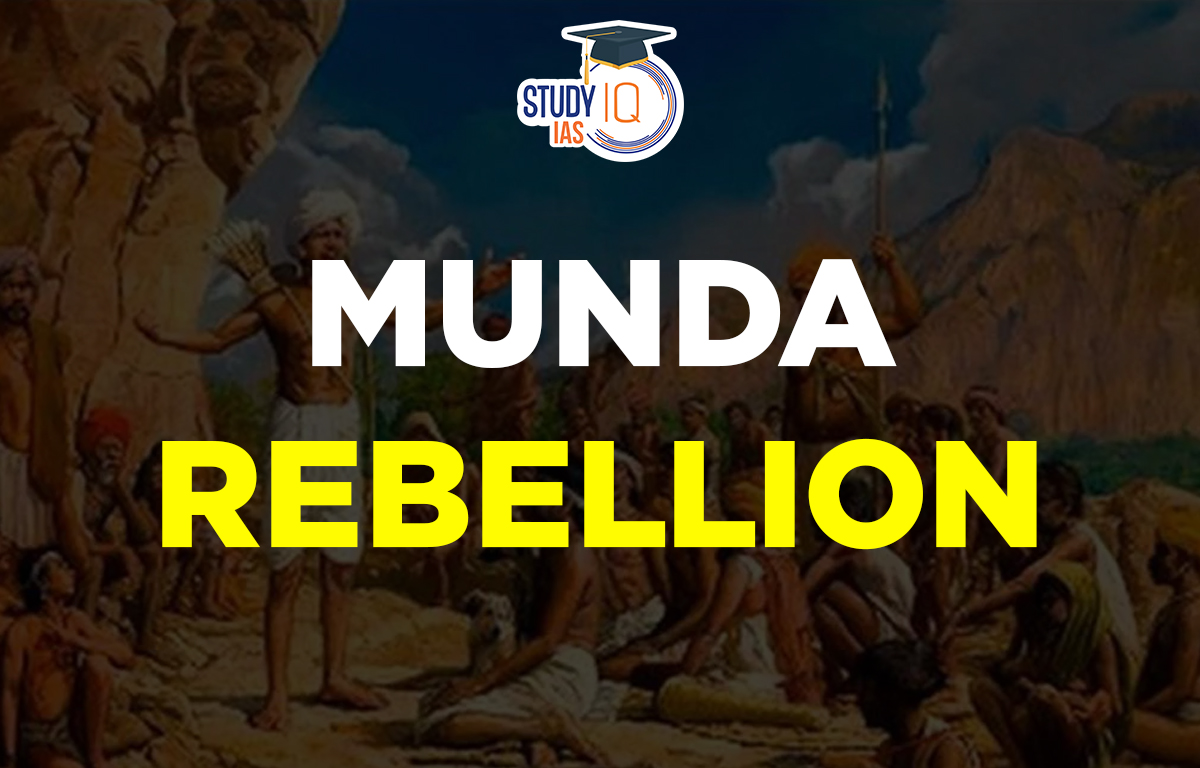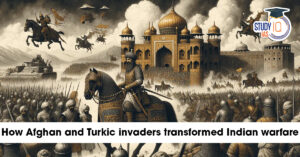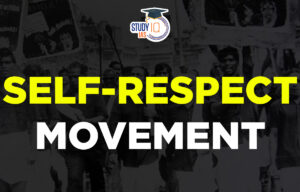Table of Contents
The Munda Rebellion, also known as the Ulgulan (The Great Rebellion), was a significant uprising led by Birsa Munda against British colonial rule and feudal exploitation in the late 19th century. This movement, which began in 1899-1900, primarily took place in the Chotanagpur region (present-day Jharkhand) and was a pivotal event in the history of India’s tribal resistance movements.
Birsa Munda Jayanti 2024
Today, we honour the life and legacy of Birsa Munda, a fearless freedom fighter and the Father of the Earth, who led the Munda Rebellion against British colonial rule. His efforts to unite tribal communities and protect their rights remain an inspiration for generations. Let’s remember his sacrifice for justice, tribal identity, and social equality, and continue to uphold his vision for a better and more equitable world.
Munda Rebellion
One of the most notable tribal uprisings in the history of Indian Independence was the Munda Rebellion, also known as the Munda Ulgulan. Birsa Munda, a Munda tribal independence fighter and national hero, served as its leader. During the British Raj in the late 19th century, this uprising took place in the Bengal Presidency (now Jharkhand). It is regarded as a pivotal moment in the struggle for Indian independence. This article contains all the information you need to know about Munda Rebellion for UPSC exam preparation.
Munda Rebellion History
In the late 19th century, the Munda Rebellion emerged as a powerful resistance against British oppression, land alienation, and exploitative practices. Birsa Munda (1874–1900), a visionary leader and spiritual figure, rallied the Mundas of Jharkhand against the forced occupation of their lands. The rebellion sought to reinstate the traditional “Khuntkatti” land system and end the authority of landlords, missionaries, and British officials over tribal lands.
Munda Rebellion Causes
- Land Alienation: British colonial land policies dismantled the indigenous Khuntkatti system, transferring tribal lands to landlords and moneylenders.
- Economic Exploitation: Exploitative landowners and moneylenders charged high interests and forced labor, worsening tribal poverty.
- Religious Influence: Christian missionaries attempted to convert Mundas, disrupting traditional religious practices, which increased tribal resentment.
- Social Oppression: Birsa’s role as a social reformer aimed to cleanse Munda society of foreign influence, opposing practices like animal sacrifice and encouraging the wearing of sacred threads.
Evolution of Munda Rebellion
The scene in the Birsa motion was comparable to that in the Sardaf motion. Birsa’s main objective was to help the Mundas achieve their political and sacred independence. He believed that this objective could be achieved by stopping the dikus’ coercion, directing the Britishers away from their territory, or even murdering them.
He openly announced the Birsa Raj’s structure, which allowed only Birsa to be heard. The Mundas were persuaded not to offer cash by him. On August 22, 1895, the administration consented to Birsa’s detention. The movement’s inclination against the government was heightened by Birsa’s arrest. Birsa is in charge as the Mundas rebel against the dikus once more.
Birsa Raj could only be accomplished in a world free of British authorities, including missionaries. Mundas were first identified as the owners of the soil. By choosing non-tribal people to be their owners, the British forced them to leave their homeland. Birsa pushed the Mundas to avoid paying rent to the property owners to secure land rent-free and establish the Mundas’ historical rights to the soil.
There was “total fanaticism and loathing of the foreigners, whether Hindus or Europeans,” according to Rev. Hoffman. It is crucial that these foreigners who helped create the exploitative classes were targeted by this action.
The form of the movement was aggressive. On December 24, Christmas Eve 1899, it exploded as planned. It was monitored for owners, contractors, police, and government employees. Using traditional weapons, the tribal ambushed the strangers and set their homes on fire. The movement’s condition served as a symbol of its animosity towards Christians and missionaries working for the British government.
On January 5, 1900, they stormed chowkidars and killed constables. On January 6, 1900, they engaged in conflict with the Deputy Commissioner. A policeman was killed on January 7, 1900. The administration launched a counteroffensive right away. From January 13 to January 26, 1900, it operated in beat and search mode.
| Munda Rebellion and Birsa Munda |
| Birsa Munda, a member of the Munda tribe, was a tribal reformer, spiritual authority, and independence warrior. In the 19th century, he organised a sizable religious and educational movement in opposition to British rule in the former Bengal Presidency. Together with the Munda and Oraon communities, Birsa is renowned for opposing Christian missionaries and rising up against conversion efforts.
Birsa rose to prominence as a populist figure and his followers began to refer to him as Bhagwan and Dharati Aba. He inspired the populace; the Mundas, Oraons, other Adivasis, and non-Adivasis joined the “Ulgulan” (great uproar), or uprising, against the colonial power and exploitative dikus(1899-1900) in response to his call. In prison, Birsa and a number of his supporters were resisted. He and his fellow countrymen were brought before the court on May 20th, 1900, but he fell ill on the way and had to be carried back to jail. After it was determined that he had cholera, his situation deteriorated. He passed while in custody on June 9, 1900. There is a dilemma surrounding Birsa Munda’s demise. Although it’s possible that food poisoning caused his death, the British government claimed that cholera was to blame. |
Munda Rebellion Impact
Birsa Munda Rebellion was still the most significant tribal movement since it had a great deal of positive effects on the Munda people.
- The subdivision system has been reinstated.
- 1905 – Khunti and Gumla were formally recognised as subdivisions for administrative convenience.
- 1908 – The Land Reform Acts were protected against tribal soils by the Chhotanagpur Tenancy Act, which was allowed.
Economically speaking, forced labour that was exploitative was forbidden in the area.
Munda Rebellion Importance
It forced the colonial government to issue ordinances to prevent dikus from swiping tribal lands with ease under the Chotanagpur Tenancy Act of 1908. It suggested that the tribal people may oppose injustice and voice their displeasure with the colonial law.
Day of Jharkhand’s Foundation: “The Land of Woods” is implied by the name “Jharkhand.” The Bihar Reorganization Act created the district on November 15, 2000, the fictional Bhagwan Birsa Munda’s birthday, giving it legal existence. The provinces of Bihar, Uttar Pradesh, Chhattisgarh, Odisha, and West Bengal border Jharkhand.
Munda Rebellion Significance
The form of the movement was aggressive. On December 24, Christmas Eve 1899, it exploded as planned. It was monitored for owners, contractors, police, and government employees. Using traditional weapons, the tribal ambushed the strangers and set their homes on fire. The movement’s condition served as a symbol of its animosity towards Christians and missionaries working for the British government.
On January 5, 1900, they stormed chowkidars and killed constables. On January 6, 1900, they engaged in conflict with the Deputy Commissioner. A policeman was killed on January 7, 1900. The administration launched a counteroffensive right away. From January 13 to January 26, 1900, it operated in beat and search mode.
The uprising, which was headed by Birsa Munda, also served as a reminder of the devotion and sacrifices made by the Munda tribe, and people in India now uphold their legacy. Both Jharkhand and India have commemorated and celebrated the Munda Rebellion and Birsa Munda’s efforts, with the state government observing his birthday as “Birsa Munda Jayanti” and the Indian government honouring him as a freedom fighter and national hero. Even the Indian Parliament Museum has a painting of him on display.
Munda Rebellion UPSC
The main causes and results of the Munda rebellion were the territorial and colonial management and unfair practices of land grabbing, which ultimately destroyed the traditional land system (Khuntkatti system) of the tribals. The Mundas earned some recognition of the tribe’s khuntkatti rights through the Chotanagpur Tenancy Act of 1908, and the outcome of the Munda Rebellion prohibited the forced labour system or Beth Begri. Read all the details related to Munda Rebellion for UPSC Exam Preparations.
| Related Articles | |
| Paharias Rebellion | Paika Rebellion |
| Kol Rebellion | Kuka Movement |
| Chuar Uprising |
Tribal Movements in India |
| Servants of India Society |
Self-Respect Movement |


 Birsa Munda Birth Anniversary 2025: Life...
Birsa Munda Birth Anniversary 2025: Life...
 Military Innovations of Afghans and Turk...
Military Innovations of Afghans and Turk...
 Self-Respect Movement, History, Objectiv...
Self-Respect Movement, History, Objectiv...

























